Family holidays in Dresden
Two myths mar Dresden's tourist reputation. The first is that the city was bombed during World War II, and there is nothing to see there. The second is that it is the territory of the former GDR, and there is nothing to see there. The historical part of these statements is true: the Old Town was almost destroyed by carpet bombing, and then Dresden became part of East Germany. But there are sights here, and they are definitely worth seeing.
Moreover, holidays with children in Dresden are always filled with joy. It is entertainment; it is cafes with extraordinary local desserts; it is the warmth and spicy smell of Christmas fairs — in general, there is everything for adults and children to enjoy.
The Kidpassage review will tell you about the intricacies of a family holiday in Dresden, the main attractions and entertainment, traditional cuisine and festivities.
Dresden on the map of Germany
The city of Dresden is the administrative centre of the federal state of Saxony, a major industrial centre and one of the transport hubs of Germany. The city is located in the eastern part of the country, near the borders with Poland and the Czech Republic. The distance from Dresden to Berlin is 193 km, to Leipzig — 115 km, to Nuremberg — 323 km, to Prague (Czech Republic) — 147 km, and to Wroclaw (Poland) — 268 km.
The places where Dresden is located already seem to outline the contours of travelling. The city stands on the banks of the Elbe, in the Dresden Valley, with the Ore Mountains approaching it from the west and the Elbe Sandstone Mountains from the south and east. Interestingly, the name of the area is of Slavic origin. The word "Dresdjans" can be translated as "inhabitants of the forests in the river valley".
Dresden for Kids

Photo: pixabay.com
Modern parents know that you can take a holiday with your child anywhere in the world. The only question is what kind of holiday you dream of.
The first reason to come to Dresden with children is the favourable climate. What could be more eloquent proof of this than the extensive Saxon vineyards?
The second reason for a holiday in Dresden is the variety of experiences. In the morning, you wander around the museum in the palace chambers, and in the evening, you listen to rain music in the Kunsthofpassage. The next day, you plan to take a trip on an old steamer to the castle and then — a tour of the Volkswagen factory. Yes, the city does not have much in the way of attractions and water parks, but there are water playgrounds and all sort of playground climber slides at every turn.
The third reason is comfort in everything. Air and land transport to other countries, an extensive choice of accommodation in Dresden, shops and restaurants — this is one part of the journey you don't have to worry about, even if you're travelling with an infant.
Find more details about what Dresden has in store for children below.
Best time to travel
 Photo: pixabay.com
Photo: pixabay.com
If we focus solely on the weather, planning a holiday with a child in Dresden for summer makes sense. The suitcase will be relatively light, and on warm days, walking around the city is much more pleasant. However, it often rains in the summer, so closed shoes and umbrellas will come in handy.
If you need a special occasion, visit Dresden in the second half of August, when the city day is celebrated. The name Dresden City Festival will tell you how big this event is. The three-day programme includes a festive procession, a wheeled steamboat festival and fireworks.
Of course, the Christmas season in Dresden is a particular time. The fairs open as early as the end of November and do not close until lunchtime on 24 December.
It is in this town that Germany's oldest Christmas market, the Striezelmarkt, operates. In addition to the Christmas tree, the square is decorated with a tiered Christmas pyramid and the traditional Christmas symbols of the region: the snowman, the ore miner and the Pflaumentoffel ("plum devil"). A puppet theatre, merry-go-round, and a children's railway are also operating.
Räuchermann (smoking man) is another Christmas symbol. This original candle holder was invented in Saxony. An incense candle is placed inside him so that he appears to smoke as it burns. And edible plum figurines are on sale here, so you can buy one for your child.
The Christmas Mile on Prager Strasse is very popular among Dresden residents and tourists. Santa's residence is open, where adults and children queue up to see him.
A detailed calendar of events is available on the city's official website. Many events are held in the summer, but exhibitions, concerts and festivals occur year-round. Perhaps some cultural events will influence your decision when to go to Dresden.
As for travelling to Dresden with a baby, the most favorable time is May and September. You'll have to pack clothes for different weather, but walks in the parks will give you a real joy.
Weather & Climate
Dresden's climate combines continental and maritime features. Summers are usually warm, with possible hot spells, and winters are always mildly frosty, although severe cold weather can also occur.
The best holidays in Dresden with children are definitely in summer. The average daytime temperature at this time is +21-24°C, but the temperature ranges from +15°C to +30°C. Nights can be pretty cool, ranging from +10°C to +18°C.
There is little sunshine in summer — less than half of the days. Rains are frequent, although dry weather prevails.
September in Dresden is lovely, although not always warm: the average daytime temperature is +18.6°C, and the night temperature is +12°C. In October, but sometimes the weather gives almost summer sunshine. Travellers also benefit from the fact that it rains less often than in summer.
The first-night frosts in November, with damp winds and frowning skies somewhat spoil the impression.
In December, the daytime temperature is above zero, averaging around +4°C, while at night, the temperatures occasionally drop below zero. Families with children love to spend their holidays in Dresden, and they come to the traditionally beautiful and romantic Christmas fairs. To avoid being cold during your walks, wear clothing that protects you from wind and dampness.
January and February are still slightly colder than December. It is difficult to predict whether there will be frost, but it is more likely to rain instead of snow.
Winter recedes in the second half of March, with temperatures rising to +7-15°C and an increasing number of clear days. By May, the air warms up to +16-20°C, but sometimes, the weather at the end of spring is cold and rainy.
Getting Around
 Photo: pixabay.com
Photo: pixabay.com
Visitors find the public transport system in Dresden quite convenient. The S-Bahn and river ferry lines complement the tram and bus system. In addition, the city has a funicular railway and a cable car. The DVB website publishes routes and timetables for land transport and ferries.
There is the Dresden City Card for active travellers, which entitles you to free travel and visits to some museums. However, it is not valid for all transport in Dresden, but only for buses, trams and trains. The card for 1-3 days for 1 person costs €13-27, for a family — €16-35.
The cost of a ticket for one trip is min. €2.50, a day pass min. €7, a family day pass min.11 euros. Night bus fares cost around €8. Children under 6 years old travel for free, while tickets for children from 6 to 14 years old are half as cheap as for adults. A one-way ferry journey costs around €1.5.
It is convenient to use rented bicycles to get around Dresden. There are 360 kilometres of bicycle paths along the main streets.
Taxis in Dresden are not very expensive, but they are only sometimes convenient: you can't get to many sights by taxi. For a trip around the city, you have to pay min. €10, from the airport — €16-20 euros.
It is easy to rent a car in Germany. However, considering Dresden's busyness, car tourists are recommended to leave their vehicles on the city's outskirts and use public transport. It makes sense to rent a car if you travel to neighbouring cities.
Food
 Photo: mustardclub.org
Photo: mustardclub.org
In Germany, you should look for something other than a general traditional cuisine. Each federal state has its traditions; in Saxony, there is a whole list of original dishes.
For example, Allerlei is popular here. The name can be translated as "All sorts of things" because all available vegetables are used. Stuffing, mushrooms and shrimp can be added to them.
Sauerbraten is not a dish for children because it is a stew, which before cooking is marinated in vinegar for a long time and then stewed with the addition of marinade.
But Quarkkäulchen, flatbreads made of potato curd dough, will appeal to children. They are often sold at Christmas fairs.
The main masterpiece of Christmas time is, of course, the Dresden Stollen. It is a dense yeast cake with lots of dried fruits and nuts. It can be kept for several months, so it is often bought as a gift (but don't forget to buy a good portion for yourself).
And the local cafés offer other unusual desserts. One of them is Eierschecke pie with cottage cheese and apple filling. Something similar to chocolate candy is Pfefferkuchen (Pulsnitz gingerbread). Only the finest, long-matured dough, prepared with honey and/or syrup and seasoned with select spices – summed up under the term “Pfeffer” (pepper) in the Middle Ages – is used to bake “Pfefferkuchen”. The smell of gingerbread is reminiscent of Christmas pastries, but they are sold all year round.
As for local beer, it is worth trying, particularly the products of the company Freiberger — this brewery has been known since the 13th century. Wernesgrüner Pils, whose recipe has been known since the 15th century, also deserves your attention.
What to do with kids

Photo: pixabay.com
The eternal question is how interesting it is for a child to wander around the city, see architectural monuments and visit museums. One of the answers is that children find exciting things around them, and they will show something unusual and funny to adults.
To walk with a child in Old Dresden, you must first imagine how this city disappeared and then revived. Heavy bombing at the end of the Second World War almost destroyed palaces, churches and the Dresden Opera House.
The surviving fragments of buildings were dismantled and mothballed in peacetime, and then, having prepared the site, the main architectural sights of the city were reassembled.
Some places, like the residence castle, are still undergoing reconstruction work but already have exciting museums. And here is what is interesting: neither bombing nor fire has damaged the tile panel "Procession of Princes" on the castle wall. Take a walk with your child along the hundred-metre-long composition, looking at the outfits and armour of the procession participants.
Dresden's Old Town is quite large and, as in many cities, there are Hop-On Hop-Off tourist buses. If you see something interesting, get off, look and then continue on the next bus. A nice bonus: there's a special audio guide for kids.
But what will definitely surpass a regular tourist bus are the wheeled steamers travelling along the Elbe. These are real passenger ships built 80-130 years ago. With a younger child in Dresden, a short excursion within the city is enough; with older children, you can be reached by river ferry to Saxon Switzerland.
Children are also fascinated by the funicular and suspension railway in the Loschwitz area. Both lifts were built at the turn of the 19th and 20th centuries but are still in good working order. The upper stations offer views of the Elbe and the Old Town.
By the way, both are already in the New Town. And that's not the only reason to go there. For example, on this side of the river is the Kunsthofpassage, a fantastic place that seems to have been created during a game. Here, gutters play musical instruments, facades borrow colours from the sky, and fairy-tale creatures walk through the courtyards.
The best things to do for kids in Dresden

Photo: facebook.com/ZooDresden
Even if the goal of a family holiday is to see all the sights, the programme needs to be diluted. If you switch your children's attention, they are fresh and ready to move on again.
Just a step away from the centre and you are at the Dresden Zoo. It is small, and children do not get tired during the excursion, but they have a lot of emotions from watching meerkats or meeting with goats.
But Dresden's Grand Garden, the Großer Garten, where the zoo is located, is enormous. There's even a tourist train that runs through it. Take a ride around the circle or get off near the lake, where boat hire is available. In the summertime, see a play in the small puppet theatre: you don't need an entrance ticket to visit it. And, of course, your child should try out all the playgrounds in the neighborhood.
The Botanical Garden, which also has a place in Grosser Garten, is great for spending time with children. It is not just an area with different plants: among the highlights of the botanical garden are the Amazonian Victoria, which has a leaf diameter of 2 metres, cocoa trees, coffee trees and Ceylon cinnamon trees. In general, the collection totals 10 thousand species. And the entrance fee is collected by... squirrels. The park offers free entry, but the squirrel family willingly accepts nuts from visitors.
In winter, when it's cold or damp outside, indoor children's entertainment centres can be a good decision. The Buntewelt in the Old Town offers a quiet playground with lots of children's board games, a variety of construction equipment, and a space for 1-2-year-olds.
Kuddeldaddeldu im Elbepark and Kidsplanet are mazes, trampolines, arcade games, and everything kids love. The PLAYPORT park is attractive because it is built in an old airport building and has a themed design (it is located far away, but the city train goes there).
Dresden has no big water park, but Elbamare Erlebnisbad can be an excellent place for a family holiday. There is only one slide, but there are children's, swimming and hydromassage pools, an outdoor and indoor relaxation area, saunas and a spa.
Entertainment in the vicinity
 Photo: sonnenlandpark.de
Photo: sonnenlandpark.de
What needs to be added to the list of things to do in Dresden with a child is an amusement park. The closest is Sonnenlandpark in Lichtenau, which can be reached in less than an hour by car. Its attractions are designed for children from one year to 13 years old, but one special structure should be noted: the tower with slides. The lowest slide starts from a height of 5 metres, and the highest is 25 metres high. There is also an indoor entertainment area in the park.
If you're looking for bigger rides, we recommend travelling to Leipzig. The Belantis Park houses crazy roller coasters and other extreme rides, children's favourite carousels, playgrounds and stages for performances.
The drive to Kulturinsel Einsiedel Park, near the Polish border, takes a good hour and a half, but it's worth it. The place in the forest is built up with tree houses: some are intended for games, the museum exposition occupies some of them, and some serve as hotel rooms. A trip here will be an adventure because there are underground passages and a magical castle.
An hour's drive from Dresden is the wonderful Saurierpark Museum park. Dinosaurs roam its paths, and megalodons and cameroceras live in the ocean. Visitors noted the excellent playgrounds and conditions for travelling with kids.
An excellent place for a winter holiday is Altenberg in the Ore Mountains. There are simple ski slopes here, but most guests prefer sledging. The Altenberg toboggan run is also open in summer, and a rope park is available.
Attractions

Photo: pixabay.com
A tour of the opulent facades (Baroque here, Rococo there, and eclecticism here) is an idea of what to see in Dresden. The palaces are now museums, and there are a few things to keep little tourists interested.
For example, there is an Armoury Chamber in the residence castle, also known as the Palace of the Electors. You can see lats made for horses, samurai swords, and pistols of different times in its halls.
The most famous museum of the Zwinger complex is the Old Masters Gallery. Its collection contains countless masterpieces, including Raphael's Sistine Madonna, Giorgione's The Sleeping Venus and Lyotard's The Chocolate Girl.
A logical continuation is a trip to the New Masters Gallery in the Albertinum building. Not all the names will be familiar to you, but the gallery exhibits fine examples of German Romanticism, Impressionism and modern fine art.
Pillnitz Palace and Park is no longer in the Old Town and is often reached by steamer. Its main attraction is the park, but the Castle Museum and the Museum of applied arts are also worth a visit.
The good news is that most of Dresden's museums have free admission for children under 16.
It is not a complete list of the city's palaces and castles. But since castles are often the most interesting places for children, here are some more impressive sites around Dresden:
- the Hunting castle with restored interiors in Moritzburg;
- the castle Albrechtsburg in Meissen on the castle hill;
- Weesenstein Castle, which dates back to the 12th century;
- Stolpen Fortress standing on basalt pillars;
- the medieval building of Freiberg;
- Königstein Castle, with its deep well in its centre, is built into a rocky plateau.
City museums
 Photo: verkehrsmuseum-dresden.de
Photo: verkehrsmuseum-dresden.de
Not everyone likes to explore antiquities. What to visit in Dresden with a child if you want something more up-to-date?
At the Transport Museum, all visitors are drawn to the model railway — 26 trains run on it. But who among children would refuse to steer a ship entering a harbour or compare the seats in the first flying machines and modern aircraft?
A great addition to this excursion will be another one — to the Railway museum. It is not open daily, so check its working schedule before your visit.
The exposition of the Hygiene museum is exciting. Take the opportunity to show your child how similar the organisms of different animals and humans are. Young guests love the interactive exhibition "Five Senses".
As you stroll through the Grand Garden, you will probably notice a cylindrical building with a transparent façade. It is Die Gläserne Manufaktur, Volkswagen's car factory and exhibition centre. There are now guided tours here, and there is also a children's programme. Young visitors are shown how old cars work and what to expect from the vehicles of the future. There is a quiz route in the park around the factory: a prize awaits those who answer all the questions correctly.
And there is also a museum in Dresden, which some visitors detect by smell. Already on the approach, you can smell the aromas of chocolate because we are talking about the Schokoladenmuseum. After the tour, you will know the difference between an ordinary bar and real chocolate. The kids will fall in love with the German Christmas treat Dominosteine, which hides a layer of gingerbread, marzipan and fruit jelly underneath the chocolate coating.
Here are some more ideas of what to visit with kids in Dresden:
- city museum;
- military history museum;
- ethnographic museum;
- museum of folk art and puppet theatre;
- museum of natural history.
A trip to the mountains

Photo: reiseuhu.de
A trip to the Ore Mountains or Saxon Switzerland will enhance a summer holiday in Dresden with children.
The Ore Mountains are, firstly, the already mentioned Freiberg. One of the fantastic places in the town is, of course, the Terra Mineralia Museum. It has more than three thousand exhibits, but even more interesting is the story about why minerals have such shape and colour, how they are formed, how they are sought and mined.
Secondly, a trip along the "Silver Road" and a visit to the silver "Rich Mine" gives an idea of what this region was like. There are also hiking trails through the Ore Mountains and skiing in winter.
Saxon Switzerland is, first and foremost, an incredible landscape. The Elbe flows here: its left bank is gentle, while the right bank is lined with jagged sandstone cliffs. Among the most beautiful places are Bastei, where the old bridge over the gorge has been preserved, the Kuhstal Arch, and the Lichtenhein Waterfall.
Where to stay: Dresden districts
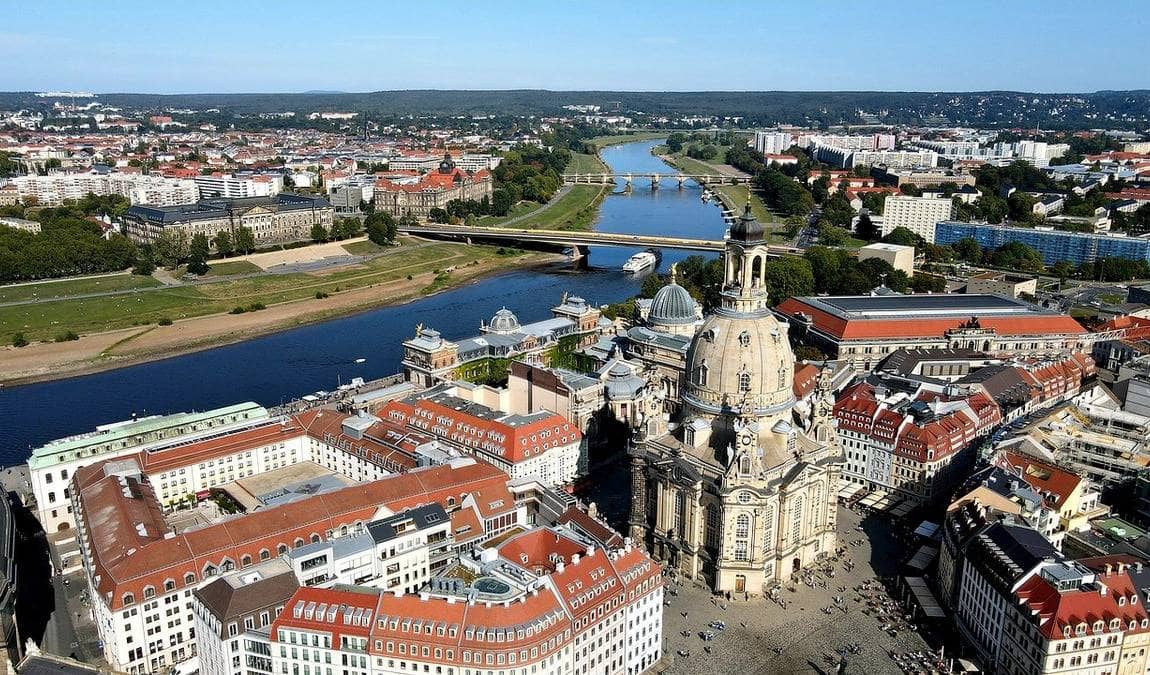 Photo: pixabay.com
Photo: pixabay.com
Where to stay in Dresden with children is more a matter of personal preference. Whether you want a hotel in an old house or a new building, apartments in the centre or accommodation in the suburbs, you can find it all without any problems. Neither hotel category nor location will affect the quality of service, considering that, in principle, "4-star" and "5-star" hotels have a higher level of service.
If you plan a short stay in Dresden, staying in the Old Town is better. The main sights are within walking distance, and the train station is not far away, making it convenient to travel around Dresden. However, please note that older buildings may not have a lift.
The new districts of Dresden are well connected to the centre, so you can look for accommodation there too. Not to say that this option is cheaper, but the New Town may be quieter than the crowded touristy centre.
Another atypical option for where to stay in Dresden when travelling as a family is hostels. The thing is that the city has a lot of hostels with rooms for 4-5 people, where parents with two or three children can stay.
Since the city hotels have bed and breakfasts but no game rooms and children's menus, for independent holidays in Dresden with children, many travellers rent apartments. In this case, organising the baby's meals and establishing a familiar daily routine is easier. When choosing where it is better with children, ask about the availability of a cot.
Near Dresden, there are many small picturesque towns where you can book a room or rent an apartment. This option is suitable if you intend to travel and are looking for an alternative for one or two days. But travelling from the suburbs to Dresden is a waste of time.
 [email protected]
[email protected]


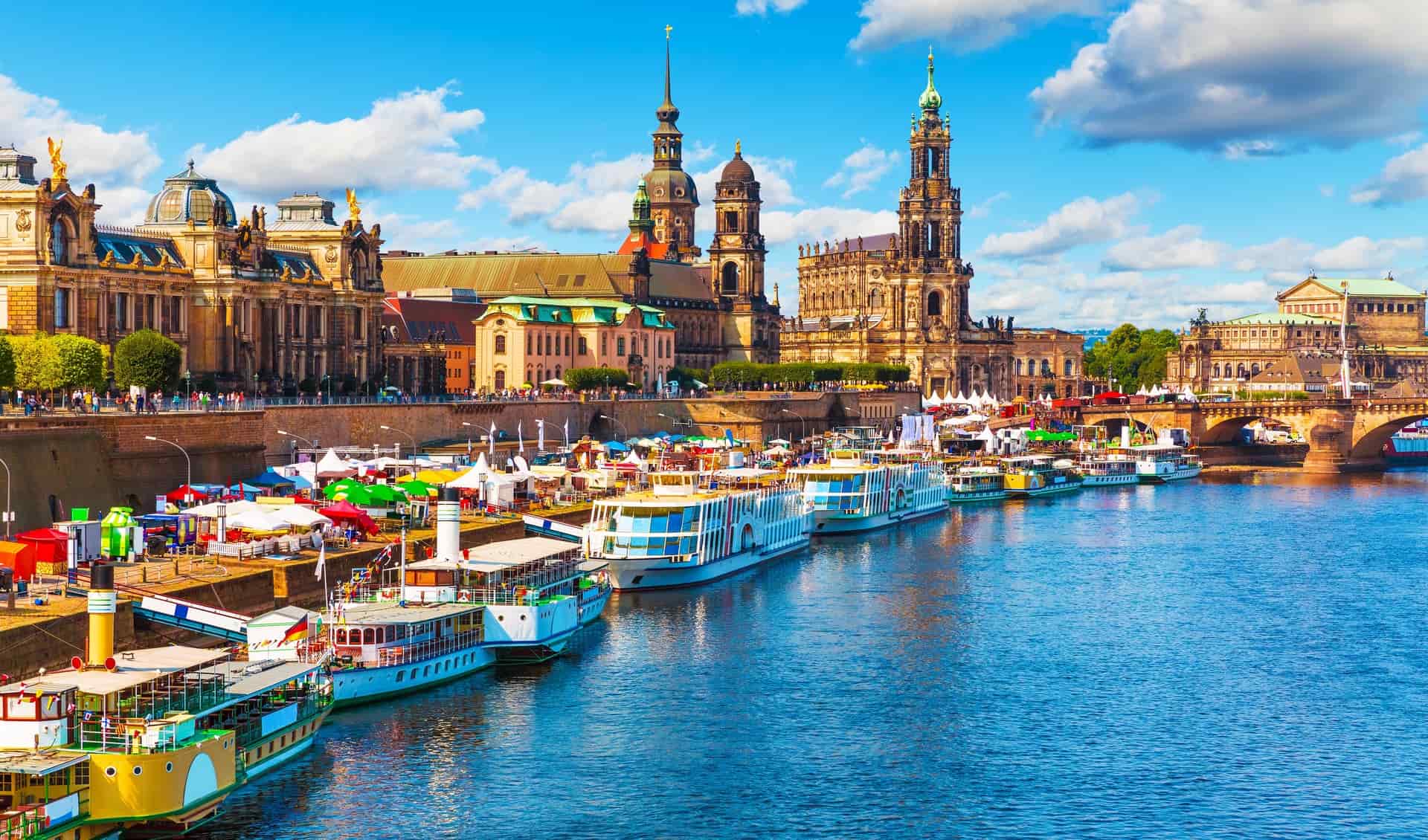



.jpg)
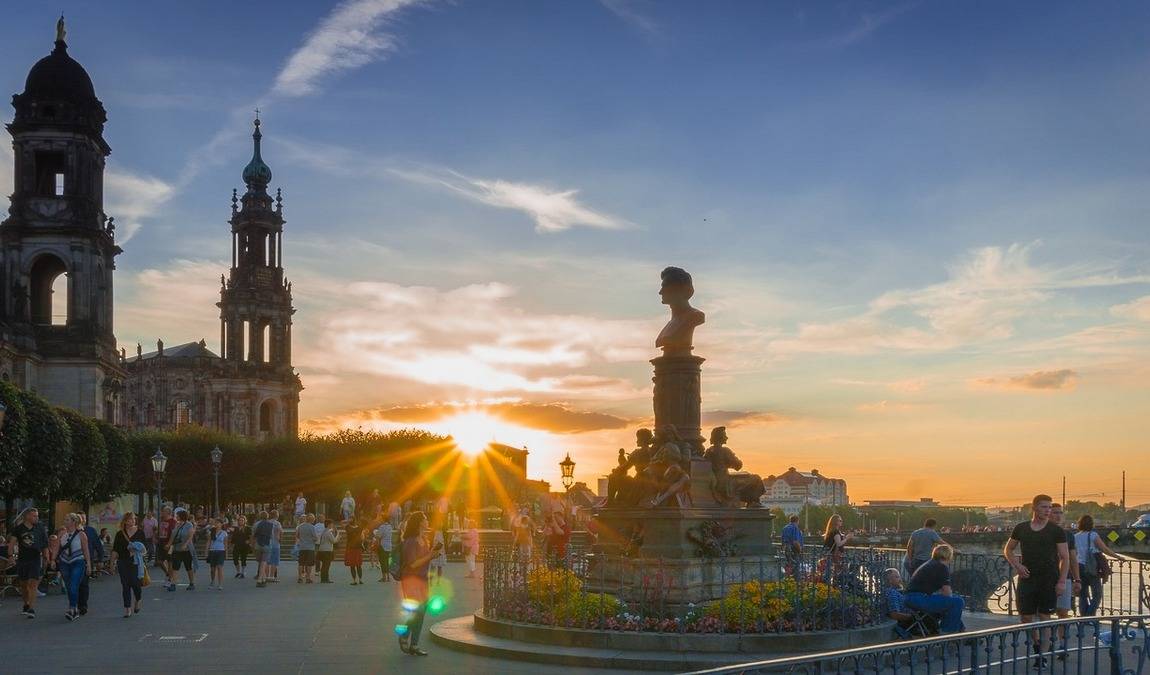 Photo: pixabay.com
Photo: pixabay.com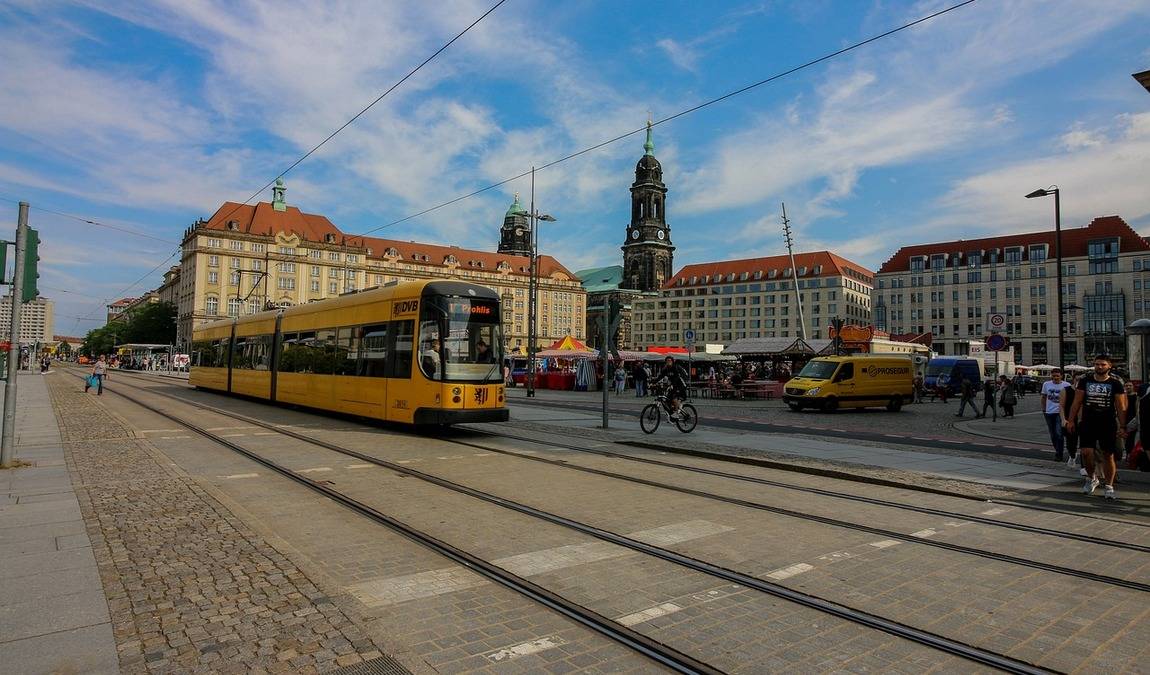 Photo: pixabay.com
Photo: pixabay.com Photo: mustardclub.org
Photo: mustardclub.org
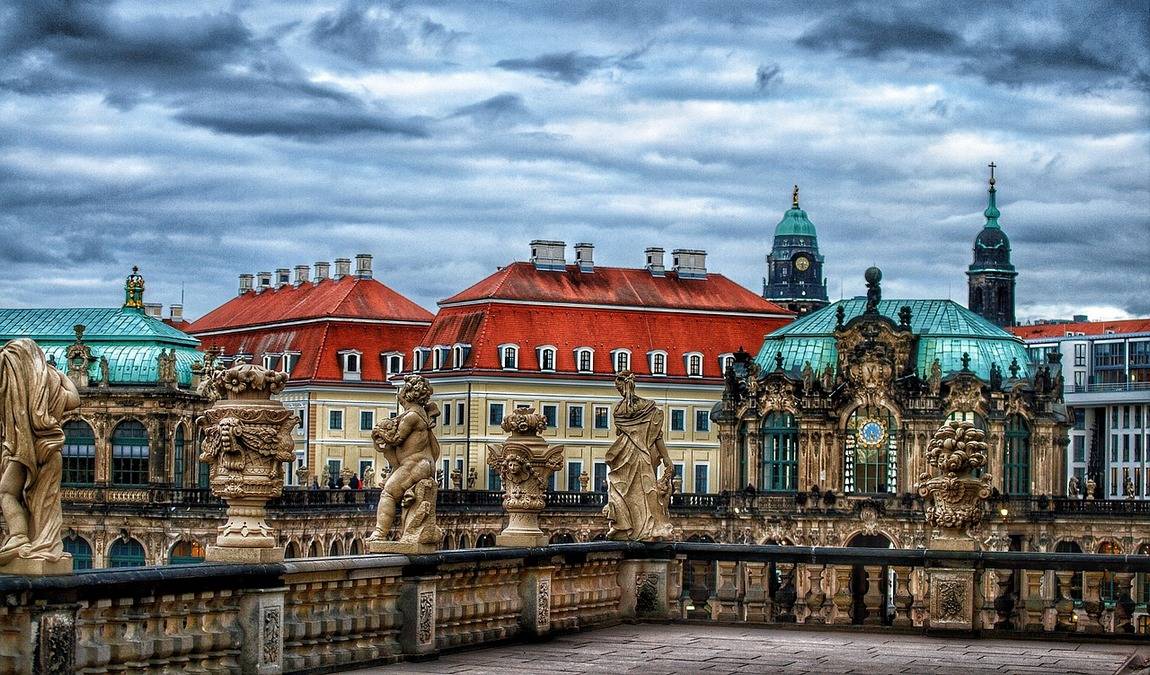

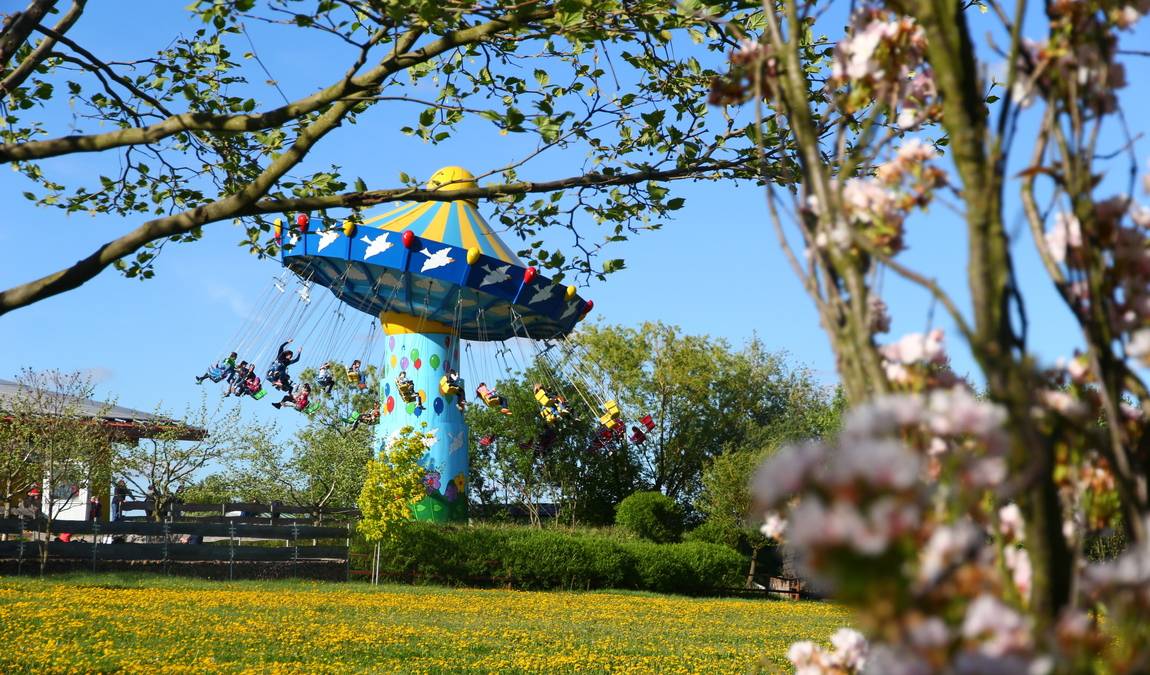 Photo: sonnenlandpark.de
Photo: sonnenlandpark.de
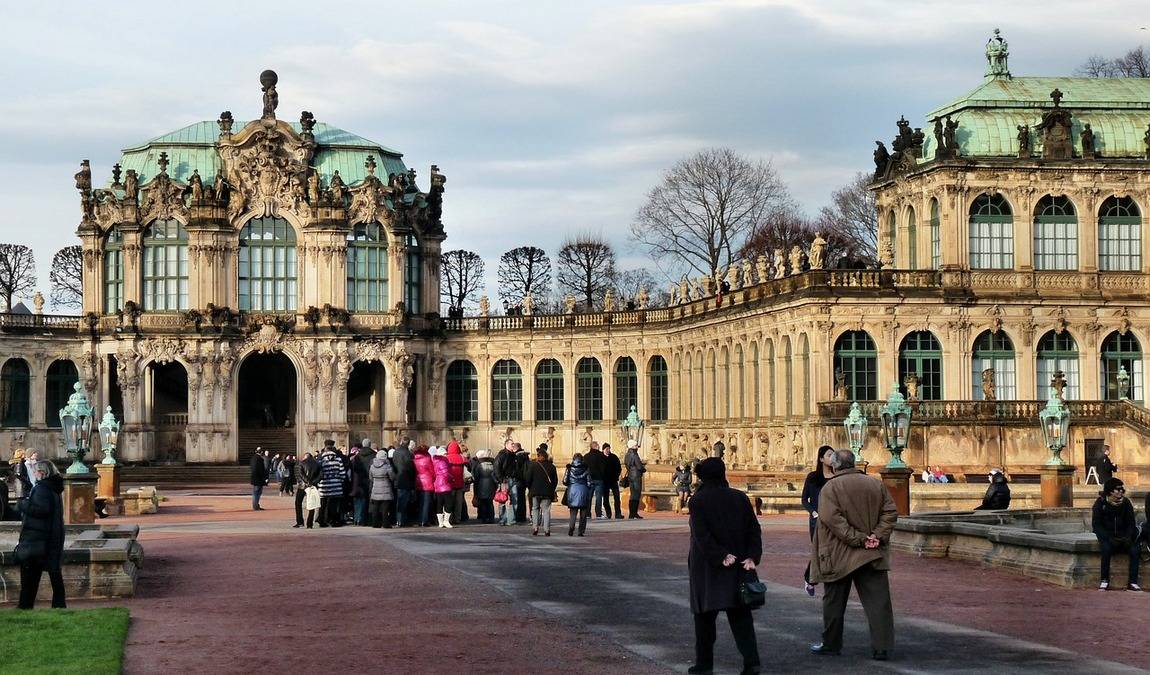
 Photo: verkehrsmuseum-dresden.de
Photo: verkehrsmuseum-dresden.de
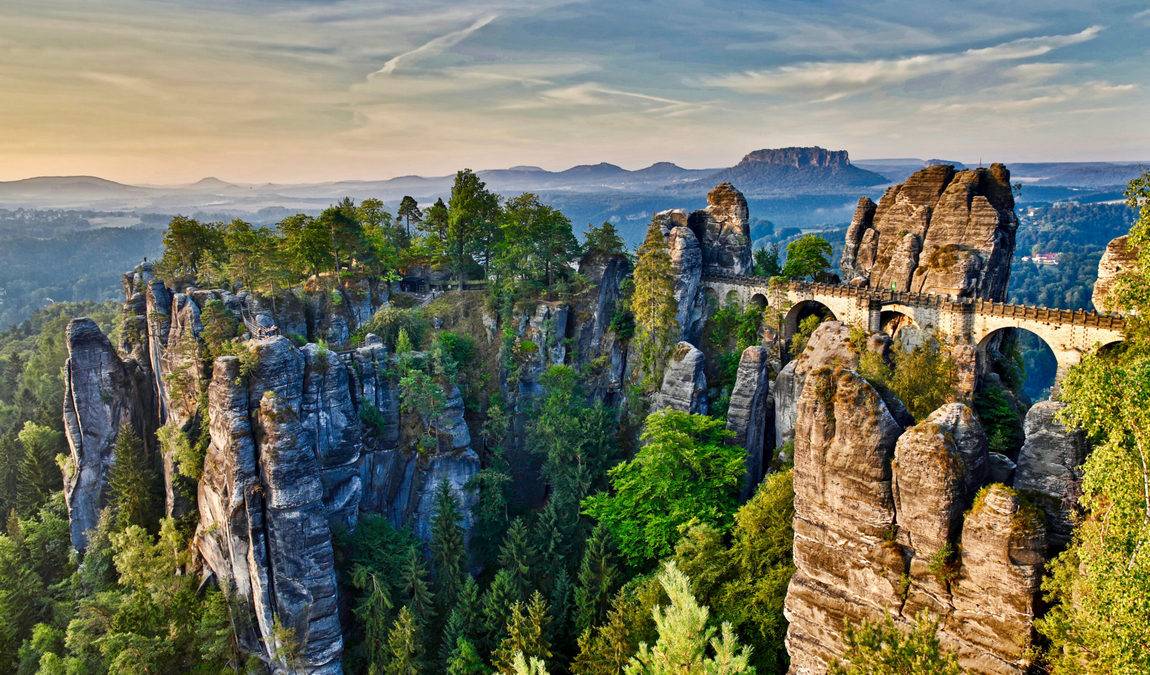



 Photo: pixabay.com
Photo: pixabay.com

